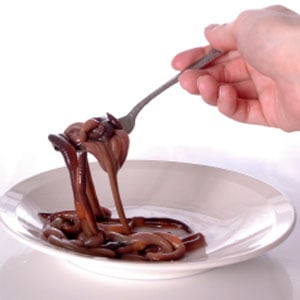The diet industry boom was also down to the rise in celebrity and the media and the development of new medicines, says Foxcroft. Diet drugs, pills and potions became increasingly big business in the 19th Century. But these so-called "wonder-remedies" often had dangerous ingredients, including arsenic and strychnine. While the amount of arsenic in the pills was small, it was still extremely dangerous. Often dieters would take more than the recommended dose of the pills thinking they would lose more weight, risking arsenic poisoning.
Also, arsenic was occasionally not advertised as an ingredient meaning people didn't know what they were actually taking. Plenty of people bought into these 'miracle cures'. Celebrity dieters are nothing new. Lord Byron was one of first diet icons and helped kick start the public's obsession with how celebrities lose weight.
Much like today people wanted to look like celebrities of the time and new diet fads were advertised in the expanding media. And like today's celebrities, Byron worked hard to maintain his figure. In the early s the poet popularised a diet consisting mainly of vinegar.
If he were alive today he would probably be endorsing a book about the diet - and it would probably be a bestseller.
In order to cleanse and purge his body he would drink vinegar daily and eat potatoes soaked in the stuff. Side effects included vomiting and diarrhoea.
Because of Byron's huge cultural influence, there was a lot of worry about the effect his dieting was having on the youth of the day. Romantics were restricting themselves to vinegar and rice to get Byron's fashionably thin and pale look. Queen Victoria was terrified of putting on weight. In the mid s Charles Goodyear figured out how to improve rubber beyond its natural state with a process called vulcanization.
With the Industrial Revolution and mass production, suddenly the use of rubber expanded massively. That included rubber knickers and corsets. The thinking behind both was that rubber held in fat but more importantly caused sweating, hopefully leading to weight loss. They were worn by both men and women, says Foxcroft. It wasn't much fun as the skin-macerating underwear meant flesh would be softened and broken down by extended exposure to moisture, making it vulnerable to infection. You can follow the Magazine on Twitter and on Facebook.
A new study finds that microplastics in soil can stunt the growth of earthworms. Earthworm poop also helps keep soil healthy. As worms burrow, they eat organic matter such as dead plants.
Worms in humans
Their poop — called castings — contains essential nutrients such as nitrogen and phosphorous. These nutrients help plants grow. As an ecologist, he studies how people affect soils. He and his team focused on earthworms exposed to microplastics. Worms create little tunnels as they move through the ground. These tunnels allow air and water to get to plant roots. Without worm tunnels, soil can dry out and become too compacted for plants to grow well. The new study found that worms living in soil with microplastics lost weight. So did ryegrass, a popular grass used for lawns. When ryegrass was grown along with worms and microplastics, both it and the worms became stunted.
Microplastics are five millimeters 0.
Tapeworm Diet Pills
They often are released by the breakdown of water bottles, shopping bags or other plastic products. Those fibers will go down the drain and into the environment. Even car tires and breaks can release microplastics. Scientists have known since the s that microplastics pollute the ocean. Only in the last 15 years or so, have scientists learned how microplastics enter waterways, including lakes and rivers.
From there, those plastic bits flow to the oceans. Recently, researchers have begun finding microplastics in the air and soil, too. For instance, a study found both such plastic bits polluting farmlands. How do they get there?
Plastic fibers and dust can settle out of the air. Sewage can contain microplastics. Farmers sometimes spread that treated sewage on farm fields as fertilizer.
Iowa woman tries 'tapeworm diet', prompts doctor warning
Many farmers also cover parts of their fields with plastic mulch to suppress weeds and to keep soils from quickly drying out. That plastic litter breaks down over time into smaller and smaller bits, he points out. Studies have shown that when there are microplastics in water, fish and shellfish will eat them.
Similarly, the new study finds that when there are microplastics in soil, worms will eat them. So the researchers designed experiments to learn how that might affect the worms. Some pots got bits of polyethylene Pah-lee-ETH-eh-leen. This material is used to make plastic bottles and disposable bags. Another set of pots got a biodegradable plastic made from polylactic acid. A third set had microplastic clothing fibers mixed into the dirt.
Next, the researchers dug up rosy-tipped earthworms. They collected them from grassy areas in Cambridge. These worms are common in the topsoil of temperate regions latitudes between the subtropics and the poles. The researchers weighed each worm at the start of the tests.
